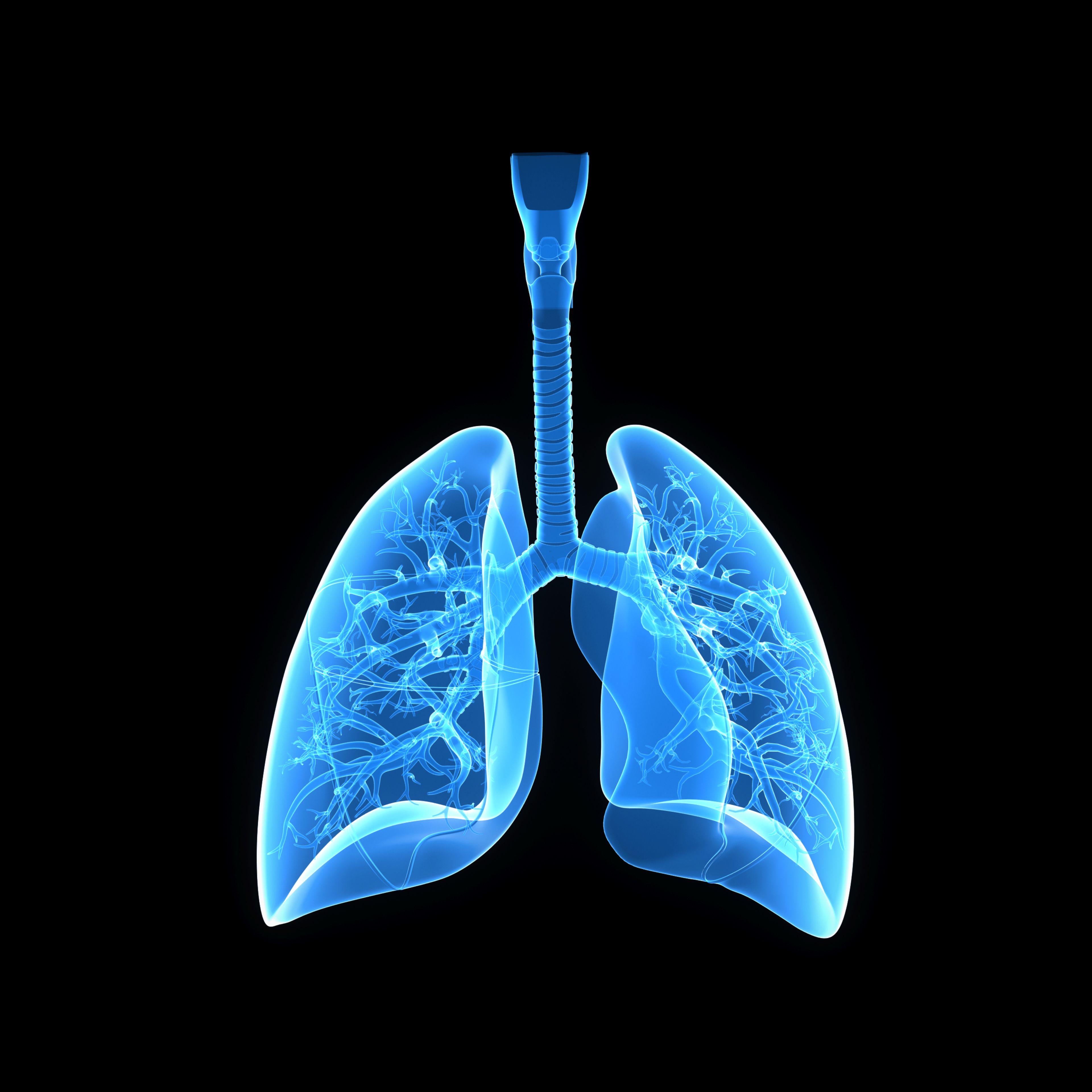FDA Considers First-Line Amivantamab Plus Lazertinib in EGFR+ NSCLC
The FDA is considering 2 applications for amivantamab plus lazertinib as a first-line treatment for EGFR-mutated non–small cell lung cancer, based on the phase 3 MARIPOSA study.

- Amivantamab-vmjw (Rybrevant) in combination with lazertinib (Leclaza) targets specific genetic mutations in lung cancer and has potential to be a new frontline option.
- In the phase 3 MARIPOSA study (NCT04487080), the combination showed a 30% reduction in disease progression compared with osimertinib (Tagrisso) alone.
- This submission for amivantamab is the third submission in 4 months from its clinical development program.
The FDA has received submissions for supplemental biologics license application (sBLA) and a new drug application (NDA) seeking the approval of amivantamab plus lazertinib for the first-line treatment of adult patients with locally advanced or metastatic non–small cell lung cancer (NSCLC) with EGFR exon 19 deletions (ex19del) or L858R substitution mutations, as detected by an FDA-approved test.1
These submissions are supported by data from the phase 3 MARIPOSA study, which is looking at the efficacy and safety of [amivantamab] combined with lazertinib vs osimertinib vs lazertinib alone in first-line for the treatment of patients with locally advanced or metastatic NSCLC with EGFR ex19del or L858R substitution mutations. According to findings from the study presented at the European Society of Medical Oncology (ESMO) 2023 Congress, amivantamab given with lazertinib (Leclaza) led to a reduced risk of disease progression or death by 30% vs osimertinib alone in this patient population.2
The median progression-free survival (PFS) observed with the combination, at a median follow-up of 22.0 months, was 23.7 months (95% CI, 19.1-27.7). This was compared with 16.6 months (95% CI, 14.8-18.5) observed with osimertinib alone (HR, 0.70; 95% CI, 0.58-0.85; P <.001). At 12 and 24 months, the PFS rates were 73% and 48% with the combination, respectively, vs 65% and 34% with osimertinib alone. Among patients treated with lazertinib alone, the median PFS was 18.5 months (95% CI, 14.8-20.1).
“With a combination of lazertinib plus amivantamab vs osimertinib, we reached a median PFS of 24 months. This is an improvement as compared with osimertinib for which median PFS was 17 months. At the end, this is very interesting data because we are now at this kind of level of median PFS of 2 years,” explained Nicolas Girard, MD, professor of Respiratory Medicine, Versailles Saint Quentin University, professor, head, at the Curie-Montsouris Thorax Institute, Institut Curie, in an interview with Targeted OncologyTM.
Lungs anterior view: © 7activestudio - stock.adobe.com

"The combination of [amivantamab] and lazertinib demonstrated statistically significant and clinically meaningful improvement in progression-free survival compared to osimertinib in patients with previously untreated EGFR-mutated NSCLC. This remains an area of high unmet need as patients often experience treatment resistance and disease progression on currently available therapies," said Kiran Patel, MD, vice president, clinical development, solid tumors, Johnson & Johnson Innovative Medicine, in a press release.1
In the randomized, phase 3 MARIPOSA study, a total of 1,074 patients were enrolled and treated with amivantamab, a bispecific antibody targeting EGFR and MET, in combination with lazertinib, an oral, third-generation EGFR tyrosine kinase inhibitor (TKI), or osimertinib, or lazertinib alone in first-line of treatment.2,3
Amivantamab was given at a dose of 1050 mg (1400 mg if the patient weighed in at 80 kg) weekly for the first 4 weeks, then every 2 weeks. Lazertinib was administered to patients at a dose of 240 mg daily. Finally, osimertinib was given at the standard 80 mg once-daily dose.3
The primary end point of the study was PFS by blinded independent central review per RECIST v1.1 criteria for the combination vs osimertinib, and secondary end points of the study consisted of OS, ORR, duration of response (DOR), PFS after first subsequent therapy (PFS2), symptomatic PFS, intracranial PFS, and safety.
Additional findings showed that the combination reduced the risk of extracranial progression or death by 32% vs osimertinib alone, and the median extracranial PFS seen for the combination was 27.5 months (95% CI, 22.1-not evaluable [NE]) vs 18.5 months (95% CI, 16.5-20.3) for the osimertinib alone arm (HR, 0.68; 95% CI, 0.56-0.83; P < .001).2
Extracranial PFS rates at 12 and 24 months were 77% and 53% with the combination, vs 67% and 38% with osimertinib alone, respectively. Additionally, while the results were not yet mature, the interim overall survival (OS) findings demonstrated a trend which favored the combination (HR, 0.80; 95% CI, 0.61-1.05; P =.11). With the combination and osimertinib alone arms, the estimated 24-month PFS rates were 74% and 69%, respectively.
This sBLA and NDA submission marks the third submission in 4 months from the clinical development program for amivantamab.1 The most recent were the sBLA submissions for the MARIPOSA-2 and PAPILLON trials.
"We believe this targeted, chemotherapy-free regimen may have the potential to transform the treatment of EGFR-mutated NSCLC, and we look forward to working with the FDA in review of these applications," said Patel, in a press release.
REFERENCES
1. Johnson & Johnson submits supplemental biologics license application and new drug application to U.S. FDA seeking approval of RYBREVANT® (amivantamab-vmjw) plus lazertinib for the treatment of patients with EGFR-mutated non-small cell lung cancer (NSCLC). News release. Johnson & Johnson. December 21, 2023. Accessed December 21, 2023. http://tinyurl.com/2p9phfjm
2. Cho BC, Felip E, Spira AI, et al. Amivantamab plus lazertinib vs osimertinib as first-line treatment in patients with EGFR-mutated, advanced non-small cell lung cancer (NSCLC): Primary results from MARIPOSA, a phase III, global, randomized, controlled trial. Ann Oncol. 2023;34(suppl 2):S1306. doi:10.1016/j.annonc.2023.10.062
3. A study of amivantamab and lazertinib combination therapy versus osimertinib in locally advanced or metastatic non-small cell lung cancer (MARIPOSA). ClinicalTrials.gov. Updated December 6, 2023. Accessed December 21, 2023. https://tinyurl.com/yuwtdzpk
Kim Evaluates New Regimens for EGFR+ Lung Cancer
January 20th 2025During a Community Case Forum event in partnership with the Medical Oncology Association of Southern California, Edward S. Kim, MD, MBA, discussed the FLAURA2 and MARIPOSA trials of newer regimens for EGFR-positive lung cancer.
Read More
Amivantamab/Lazertinib Maintains OS Benefit in EGFR+ NSCLC
January 15th 2025During a Case-Based Roundtable® event, Joshua K. Sabari, MD, continued discussion of key outcomes from the MARIPOSA trial and toxicity management in patients with EGFR-mutated non–small cell lung cancer in the second article of a 2-part series.
Read More